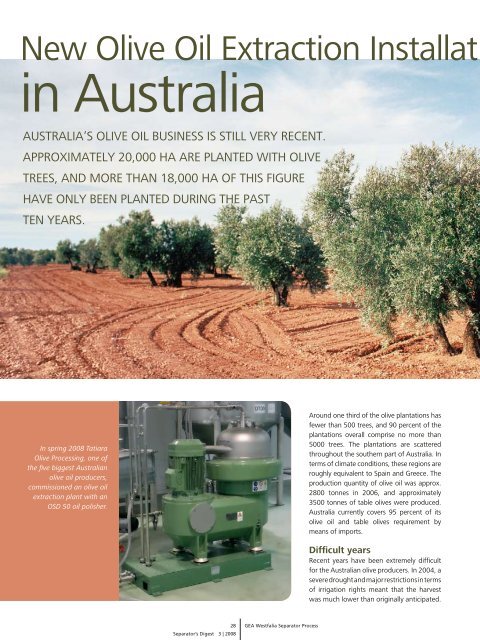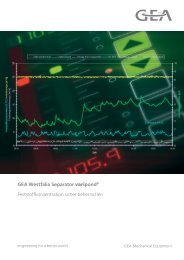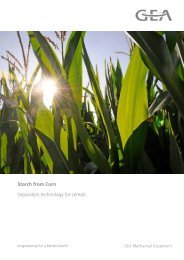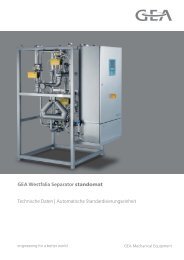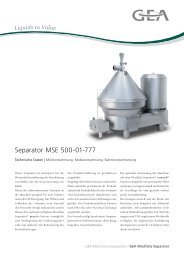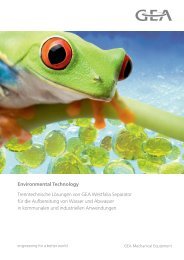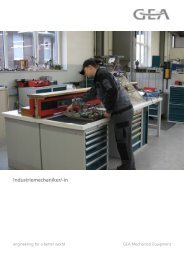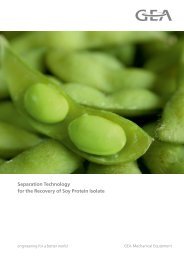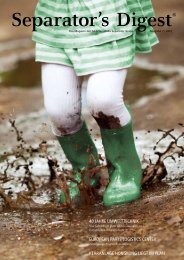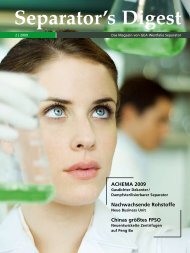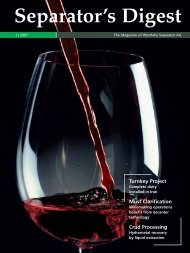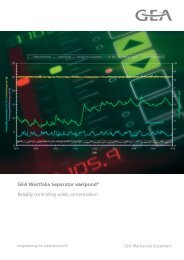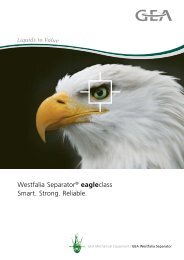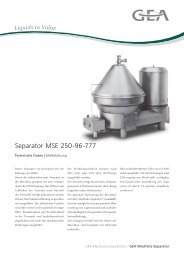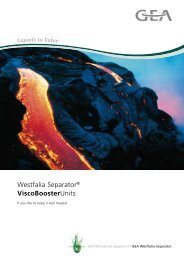Separator's Digest - GEA Westfalia Separator Group
Separator's Digest - GEA Westfalia Separator Group
Separator's Digest - GEA Westfalia Separator Group
Create successful ePaper yourself
Turn your PDF publications into a flip-book with our unique Google optimized e-Paper software.
New Olive Oil Extraction Installat<br />
in Australia<br />
AustrAlIA‘s OlIvE OIl busINEss Is stIll vEry rEcENt.<br />
ApprOxImAtEly 20,000 hA ArE plANtEd wIth OlIvE<br />
trEEs, ANd mOrE thAN 18,000 hA Of thIs fIgurE<br />
hAvE ONly bEEN plANtEd durINg thE pAst<br />
tEN yEArs.<br />
In spring 2008 Tatiara<br />
Olive Processing, one of<br />
the five biggest Australian<br />
olive oil producers,<br />
commissioned an olive oil<br />
extraction plant with an<br />
OSD 50 oil polisher.<br />
28<br />
<strong>Separator</strong>’s <strong>Digest</strong> 3 | 2008<br />
<strong>GEA</strong> <strong>Westfalia</strong> <strong>Separator</strong> Process<br />
Around one third of the olive plantations has<br />
fewer than 500 trees, and 90 percent of the<br />
plantations overall comprise no more than<br />
5000 trees. the plantations are scattered<br />
throughout the southern part of Australia. In<br />
terms of climate conditions, these regions are<br />
roughly equivalent to spain and greece. the<br />
production quantity of olive oil was approx.<br />
2800 tonnes in 2006, and approximately<br />
3500 tonnes of table olives were produced.<br />
Australia currently covers 95 percent of its<br />
olive oil and table olives requirement by<br />
means of imports.<br />
Difficult years<br />
recent years have been extremely difficult<br />
for the Australian olive producers. In 2004, a<br />
severe drought and major restrictions in terms<br />
of irrigation rights meant that the harvest<br />
was much lower than originally anticipated.


